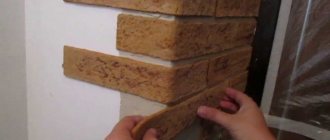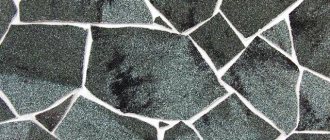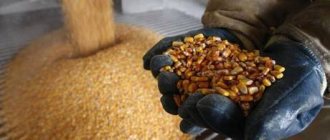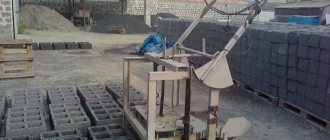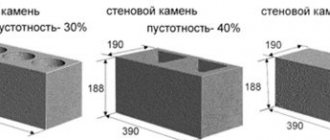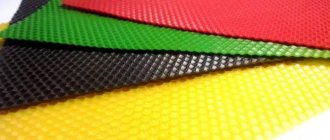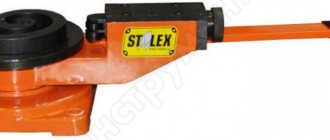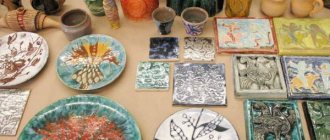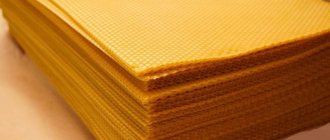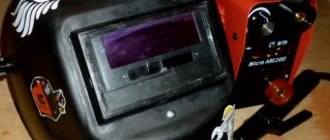Fuel pellets are an economical option for heating and an opportunity to build a profitable business. Environmentally friendly raw materials are a good source of income. In the production of pellets, a sawdust granulator is used. Thanks to their high characteristics, pellets preserve natural fuel reserves and minimize harmful emissions into the atmosphere. Pellets replace almost all types of fuel.
Characteristics and types of pellets
Pellets are bars of the same cylindrical shape pressed on special screw granulators. Sawdust is supplied mainly by wood processing plants. Advantages of pellets:
- Environmentally friendly.
- They are used for boilers in industry and boilers in everyday life.
- Gives a lot of heat.
- Not expensive at cost.
- Convenient transportation (the structure of the pellets is not damaged during transportation).
In addition to sawdust pellets, the following are produced:
- Peat. High quality, but usually used in large industries. They have a high percentage of ash content. Domestic boilers will have to be thoroughly cleaned after use.
- Coal.
- Vegetable (from buckwheat husks, corn).
- Made from straw. You get a lot of pellets and they are cheap. The percentage of ash is high - up to 3%, therefore they are used in industry. Requires constant cleaning of the boiler.
- From chicken droppings.
The standard size is pellets with a length of 50-70 mm and a circumference of 6-8 mm.
It depends on the quality of the wood used in production, and what type of pellets are needed. Pellets are also used in pyrolysis boilers. The moisture content of compressed granules is 7-10%. Density - 1200-1400 kg/m3.
Characteristics of other types of fuel:
| Type of fuel | Heat of combustion | Sulfur(%) | Ash(%) | Carbon dioxide |
| Diesel fuel | 42.5 MJ/kg | 0.2 | 1 | 78 Kg/GJ |
| Fuel oil | 42 MJ/kg | 1.2 | 1.5 | 78 Kg/GJ |
| Natural gas | 35-38 MJ/m3 | 57 Kg/GJ | ||
| Coal | 15 – 25 MJ/kg | 1-3 | 10-35 | 60 Kg/GJ |
| Wood pellets | 17.5 MJ/kg | 0.1 | 0,5-3,0 | |
| Straw pellets | 14.5 MJ/kg | 0.2 | 4 | |
| Peat granules | 10 MJ/kg | 4-20 | 70 Kg/GJ | |
| Wood chips | 10 MJ/kg | 1 | ||
| Wood sawdust | 10 MJ/kg | 1 |
Demand for pellets in Russia
Pellets in Russia are still consumed in small volumes due to the presence (at the moment) of large quantities of natural gas and oil, especially since the issue of environmental friendliness of fuel in Russia is far from the most important. The high cost of pellet boilers plays a significant role. All this causes low demand for this type of fuel in the Russian domestic market - at best, premium fuel can be sold for $100/m3. In Western Europe, similar granules cost up to $180. Still, it makes sense to develop a business producing alternative fuels with the aim of selling this fuel abroad. And it’s definitely worth organizing it for those who have sawdust or other raw materials - waste from the main production is relatively easily converted into income.
What and how are pellets made from?
The production of pressed bars takes place without chemical additives, which makes the production of sawdust pellets environmentally friendly. This is the same firewood, but compressed into a compact size in the form of pellets for transportation and heating.
The sawdust is homogenized: crushed and mixed until a homogeneous mass is obtained. Next, it is fed into a special screw press - a granulator. It compresses and gives shape. Has special holes. It works on the principle of a meat grinder.
Thanks to this pre-processing of sawdust, pellets give off much more heat than regular firewood. During the pressing process and during temperature treatment, the flammability of pellets increases several times.
Lignin, a natural component of wood, is used to glue the components together. It combines the components of pellets under the influence of a certain temperature.
Advantages of fuel pellets
Pellets are used for heating both the private sector and apartment buildings. Moreover, some industrial enterprises have installed special boilers for burning fuel pellets. Such objects save considerable amounts by heating with inexpensive but effective granulated fuel.
Pellet production as a business is considered a very profitable enterprise due to the advantages of an alternative heat source:
- high heat transfer;
- compactness of granular fuel;
- fire safety due to lack of susceptibility to spontaneous combustion;
- non-toxic, no harmful impurities in the granules;
- the volume of carbon dioxide released during combustion is much less than that of coal;
- low cost;
- low consumption.
The advantages of using granules also include ease of transportation.
Raw material quality indicators
The uniformity of the structure and the absence of debris are ensured. Good pellets will not contain dust, sand, leaves, small particles of metal and stones.
A sufficient amount of lignin, resins and other adhesives for gluing the components is welcome. If they are in the right quantity, the manufacturing procedure will be faster and the quality will be higher. Such pellets will not subsequently crumble.
The material for pellets should not have high humidity. Because of this, production slows down.
What tools and materials will be needed
To make a screw granulator from a meat grinder, you will need to prepare:
- workbench or frame on which the unit will be installed;
- lathe for metal processing;
- grinder;
- welding machine;
- metal mechanical meat grinder - Soviet or modern;
- 220 or 380 V motor;
- knife for cutting pellets;
- two pulleys with dimensions 1 to 2 - for mounting on the engine and on the screw mechanism;
- belt for connecting the motor to the meat grinder;
- drilling machine;
- metal blank for making a matrix.
Important! You will also need fastening elements - bolts and nuts, with which the knife, disk with holes, screw and pulleys will be connected to each other.
Production of pellets in a factory
At the enterprise, the production of pellets from sawdust will require compliance with the step-by-step implementation of all processes:
Production technology
- Grinding the product to small sizes: length up to 25 mm, diameter 2-4 mm. This process simplifies the operation of the pellet press. It is necessary that the sawdust be as fine as possible. Quality directly depends on this.
- The material is crushed using a crusher. The process can be repeated several times.
- The sawdust goes into the mixer and then into the drying drum.
- Drying sawdust is a very important stage, since the percentage of moisture in pellets should not be less than 8% and more than 12%. Deviation from the norm will cause poor adhesion of components and deterioration in the quality of combustion in the boiler. It is important to dry the sawdust to a certain percentage of moisture.
- The waste fractions in the process of separating sawdust and air enter the pellet boiler.
- Grinding raw materials to flour. It is then sent to cyclones, which separate the wood from the air.
- Flour is transported via conveyors to the hopper of the production granulator, and from there to the mixer.
- The mixer uses water and steam to adjust the desired humidity percentage.
- Separation into granules in an industrial granulator. At a temperature (250-300 degrees above 0) and through a selected matrix, the raw material is converted into pellets of the required size. Cut with a fixed knife.
- Cooling of pellets using a special fan and packaging.
Pellet production cycle
Production of straw pellets
First, the straw is chopped into pieces 4 mm long. Then crushing to a finer state in a mill crusher. Then the raw materials are dried in a drying drum. Next, the product must undergo humidity control (using water and steam). After several grinding procedures, the straw flour is transferred to the granulator. There, pressing and division into granules of the required circumference and length takes place. At the end, the granules are cooled and packaged.
Ring Die Granulator
This type of matrix is used in large factories for the production of pellets: the design allows the processing of 300-500 tons of raw materials.
The principle of operation is this: soft sawdust is pressed through a hole in a metal plate. This is how the pellets are formed and then cut with a knife to the required length.
How to organize supply channels for raw materials for making pellets
At the moment, there are many ways to obtain raw materials for wood ranula. The simplest of them is cooperation with a wood processing enterprise that does not have its own recycling line. Such cooperation will be in the interests of the enterprise itself, which receives income from another source and is interested in getting rid of production waste.
We recommend reading:
- production of lining –
- production of cat litter –
Making pellets yourself
Making pellets at home is a profitable business. Some parts and machines you can make yourself, others will have to be purchased. Homemade pellet production will require:
- Crusher. This process can be skipped if the product to be processed is very small to begin with.
- Dryer in the form of a drum. Made from large diameter barrels. Material: iron.
- The raw material is then turned into small sawdust, almost flour.
- Pellet press or granulator for making pellets. It is recommended to use a flat matrix at home.
How to make a crusher
To make this machine you will need the following materials:
- Circular saws - 15-25 pieces.
- Motor power: from 5 l/s.
- A pulley (suitable from a VAZ generator), a tight belt for it.
- Bearings.
- To make a metal pipe frame. A few pieces are enough.
- Sheets of metal for the bunker.
Sawdust dryer
You can make a homemade dryer using large metal barrels with a capacity of 200 liters. Blades are welded onto them to move the sawdust.
It is important that the temperature and air supply are maintained. It all depends on the size and even the time of year.
How to make a screw granulator yourself
As in every machine of this type, a matrix element is a mandatory element. It is shaped like a disk with holes, like in a meat grinder.
The next unit is the screw shaft. The sequence is as follows: a matrix is made under the finished screw. The screw and die are then “packed” into a housing or sleeve. After assembling this unit, a motor with a gearbox and a hopper are installed.
Manufacturing of Flat Die Granulator
It is recommended to make pellet press granulators with a flat matrix. Sawdust is poured onto the disk from above. Holes are made on it. Sawdust gets into them and is pressed with rollers. They move on disks. The compressed pellets fall down into a pre-prepared container. It is advisable to buy the engine and matrix ready-made. Although they are made independently. In this case, the design is assumed to be such that the pellets are of the desired uniform size.
- The drive for the granulator is an electric motor, the power of which must be at least 15 kW.
- The matrix rotation frequency ranges from 60-100 rpm. The permissible circumference is 35-50 mm. A hole equal to the diameter of the gearbox shaft is drilled in the middle of the disk.
- A matrix is attached to a vertical or horizontal shaft. It is fixed at right angles to the gearbox.
Main advantages
Pellets are cylindrical granules with a diameter of 4−10 mm and a length of 15−50 mm. Various natural materials can be used as raw materials for their production. Most often, do-it-yourself pellets at home are made from the following raw materials:
- Waste from wood processing enterprises - sawdust pellets are the highest quality.
- Bark, branches, as well as dry pine needles and foliage.
- Waste from the agro-industrial complex.
- Peat - the use of this type of fuel allows you to achieve maximum heat transfer.
In this video you will learn how to make a briquette press:
The quality of granules largely depends on the raw materials used. It is best to use fuel made from sawdust. Since wood waste in premium fuel has a high degree of purification, it is quite difficult to produce it yourself.
Also, industrial varieties may contain a certain amount of impurities - bark, pine needles, leaves. They have a higher ash content, but the energy intensity remains high. To produce pellets at home, various types of woodworking and agricultural waste are most often used.
Among the main advantages of this type of fuel are:
- The content of harmful substances is minimal, and during its combustion, carbon dioxide and water vapor are mainly released.
- Can be used in long-burning boilers.
- Doesn't require much storage space.
- Since there is no need to use chemical ingredients during the production process, the risk of allergic reactions is minimal.
- Has a high heat transfer rate.
- Pellet fuel is not subject to internal decay processes, which eliminates spontaneous combustion.
This type of fuel has many advantages
How to make a pellet machine
This refers to a granulator press that turns raw materials into small cylindrical products. The main element of this installation is a steel matrix with holes through which the dried mass of sawdust is pressed. According to the pressing method, machines are divided into 3 groups:
- High-performance press with a flat ring die. There are 2 or 3 rollers installed inside it, pressing the raw materials into the pressing holes, as shown in the diagram below.
- With a matrix in the form of a flat round plate. Two rollers, mounted on a common axis, press the sawdust mass fed from above.
- Screw units – extruders. The principle of operation is similar to a household meat grinder, where the mixture is pushed through the matrix holes by a screw.
Despite the high productivity, the first type of machines is not suitable for pressing pellets with your own hands. The reason is the complexity of manufacturing the installation. But if you are planning to do business using this fuel, then such a press will provide good profitability, since it is capable of granulating a variety of waste in large quantities.
To make the second type of press, you will need the following parts and elements:
- flat matrix made of hardened high-carbon steel with Ø6 mm holes;
- rollers made of the same metal with slots (shown in the drawing below);
- shaft and 2 bearings for installing rollers;
- steel pipe body;
- a vertical shaft that transmits rotation from the gearbox to the matrix;
- gearbox (can be from the rear axle of a passenger car);
- electric motor with a power of at least 4 kW.
The difficulty lies in the fact that the matrix and rollers are made in a metalworking production facility that has turning, milling and grinding equipment, plus a hardening furnace is required. The nuances of making homemade parts and the grades of steel used are described in the following video:
The same problem will have to be solved if you decide to assemble a screw granulator for pellets with your own hands. Only here you will need to grind an expensive screw, and instead of hardening, carburize the surface, otherwise it will break during operation.
To assemble the pressing machine, you need to weld a frame from a profile pipe or corners, where the motor with gearbox is subsequently attached, and in the upper part - the body of the granulator itself. The electric motor shaft and the gearbox shank are connected by a belt drive so that the matrix rotates at a speed of no more than 100 rpm. The assembly process is described in more detail in the video:
